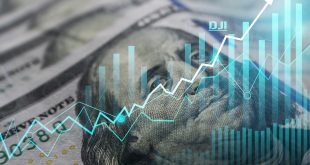US retail sales fell more than expected in November, but consumer spending is still supported by a tight labour market, with the number of Americans filing for unemployment benefits decreasing by the most in five months last week.
The biggest decrease in retail sales in 11 months reported by the Commerce Department on Thursday was payback after sales surged in October as Americans started their holiday shopping early to take advantage of discounts by businesses desperate to clear excess inventory.
Weakness in sales suggested higher borrowing costs and the threat of an imminent recession were starting to have an impact on household spending.
Consumers seem more cautious with their money amid recession fears and the draining effect of overall high inflation and sharply rising borrowing costs. Retail sales dropped 0.6% last month, the biggest drop since December 2021, after an unrevised 1.3% jump in October. Economists polled by Reuters had forecast sales dipping 0.1%.
Retail sales, which are mostly goods and are not adjusted for inflation, increased 6.5% year-on-year in November. Consumers have been drawing down savings to fund purchases. The saving rate was at 2.3% in October, the lowest since July 2005.
Sales at auto dealers fell 2.3% last month as motor vehicles remain in short supply. Receipts at service stations dipped 0.1%, reflecting lower gasoline prices.
The boost from one-time tax refunds in California, which saw some households receiving as much as $1,050 in stimulus checks in October, and Amazon’s second Prime Day faded last month.
Other factors which hurt sales included the rotation in spending back to services and discounting by retailers eager to lure cash-strapped consumers to clear unwanted inventory.
Online retail sales decreased 0.9%. Furniture stores sales dropped 2.6%. Sales at food services and drinking places, the only services category in the retail sales report, increased 0.9%. Electronics and appliance store sales fell 1.5%.
There were also decreases in receipts at general merchandise stores as well as sporting goods, hobby, musical instrument and book stores. Clothing stores sales fell 0.2%.
The Fed on Wednesday raised its policy rate by half a percentage point and projected at least an additional 75 basis points of increases in borrowing costs by the end of 2023. This rate has been hiked by 425 basis points this year from near zero to a 4.25%-4.50% range, the highest since late 2007.
Excluding automobiles, gasoline, building materials and food services, retail sales slipped 0.2% last month. Data for October was revised lower to show these so-called core retail sales increasing 0.5% instead of 0.7% as previously reported.
 Noor Trends News, Technical Analysis, Educational Tools and Recommendations
Noor Trends News, Technical Analysis, Educational Tools and Recommendations





